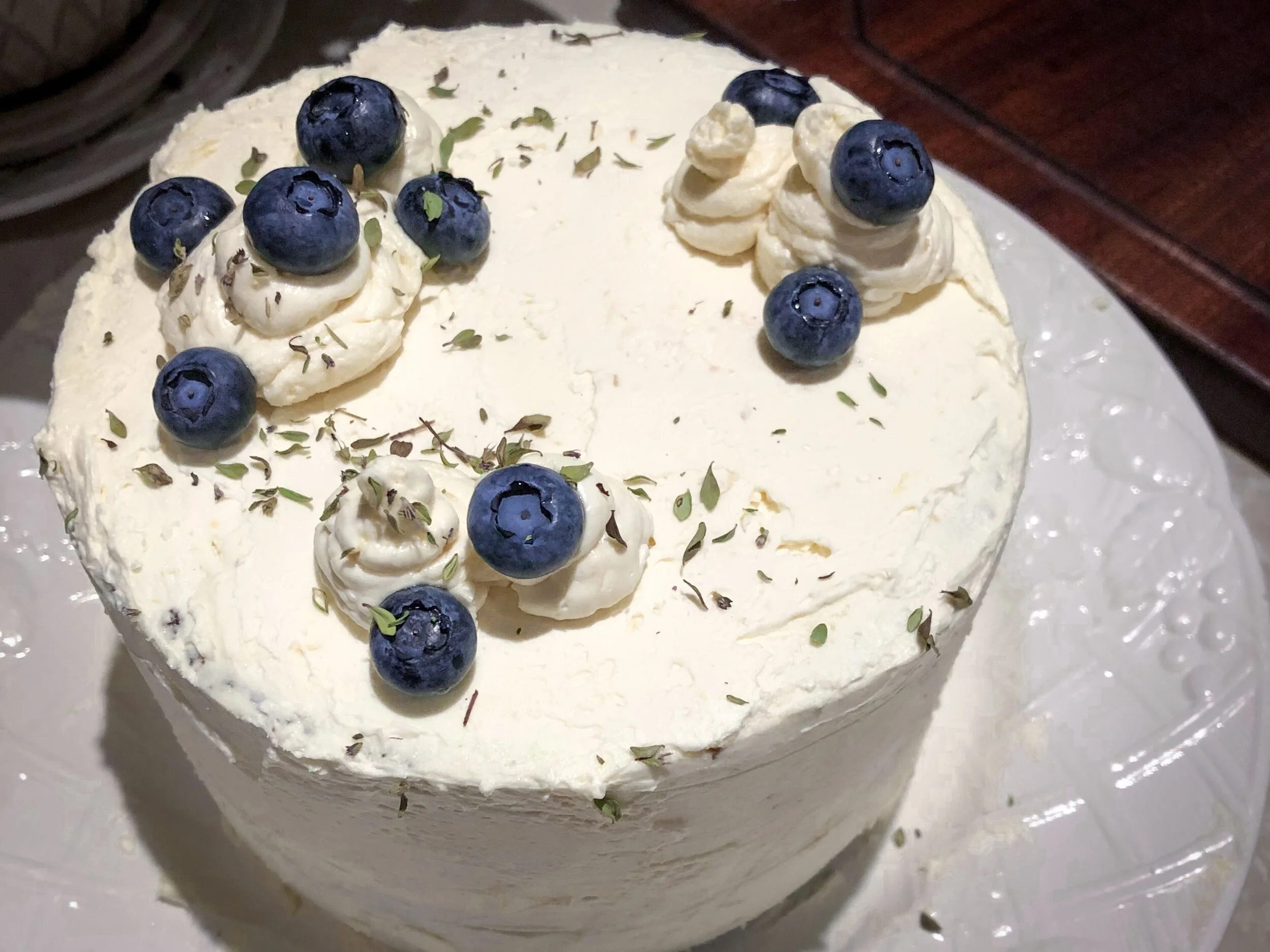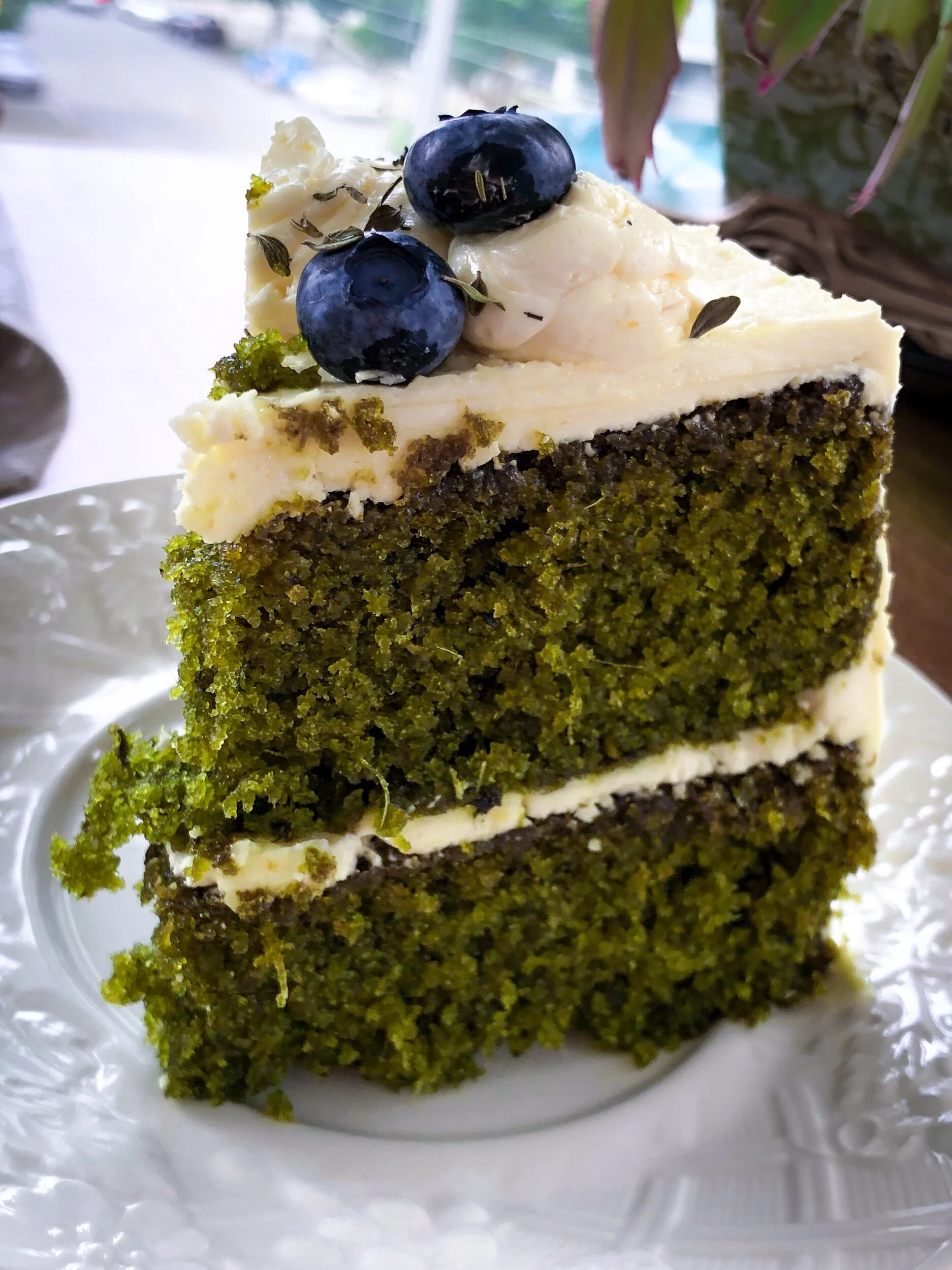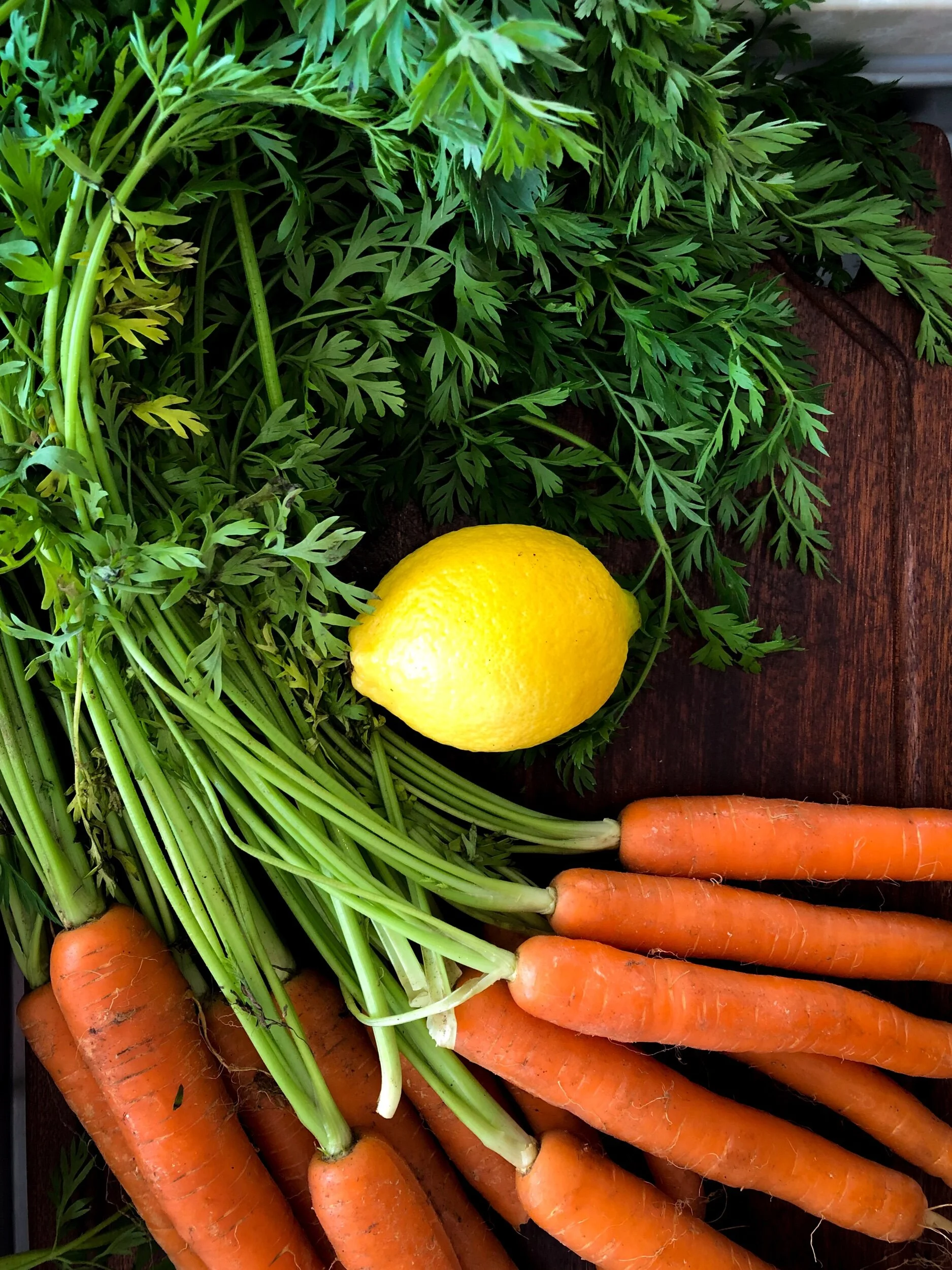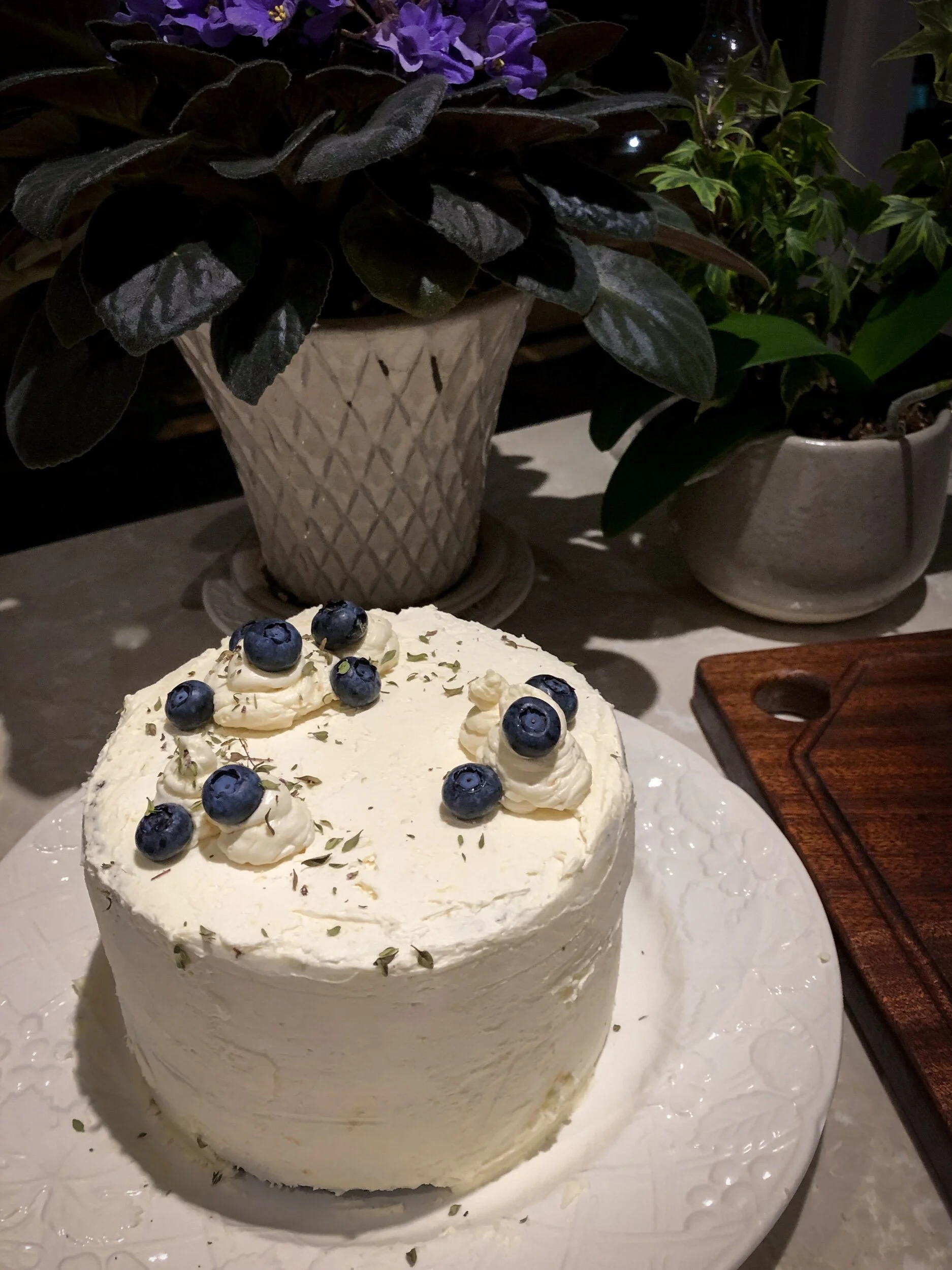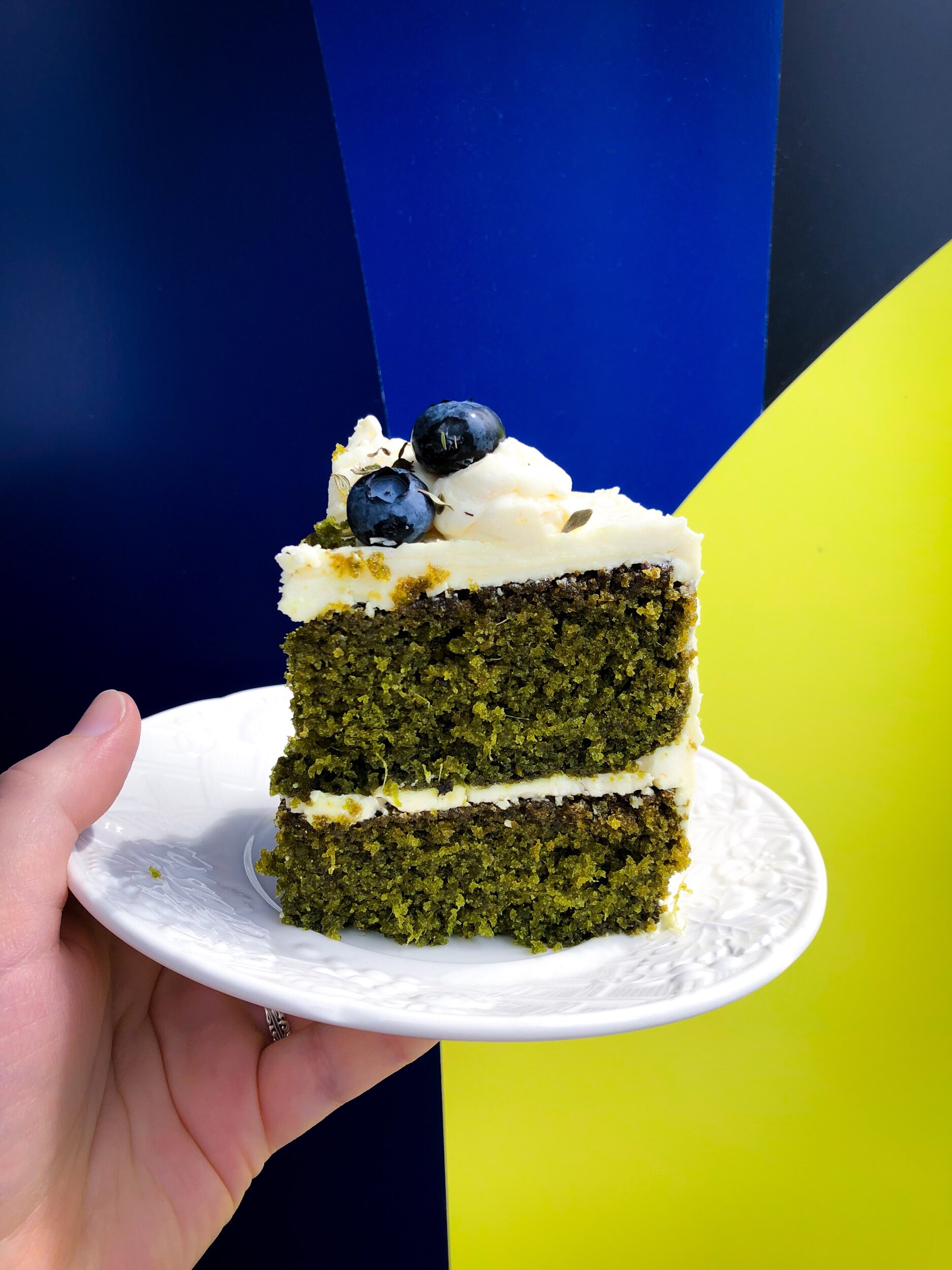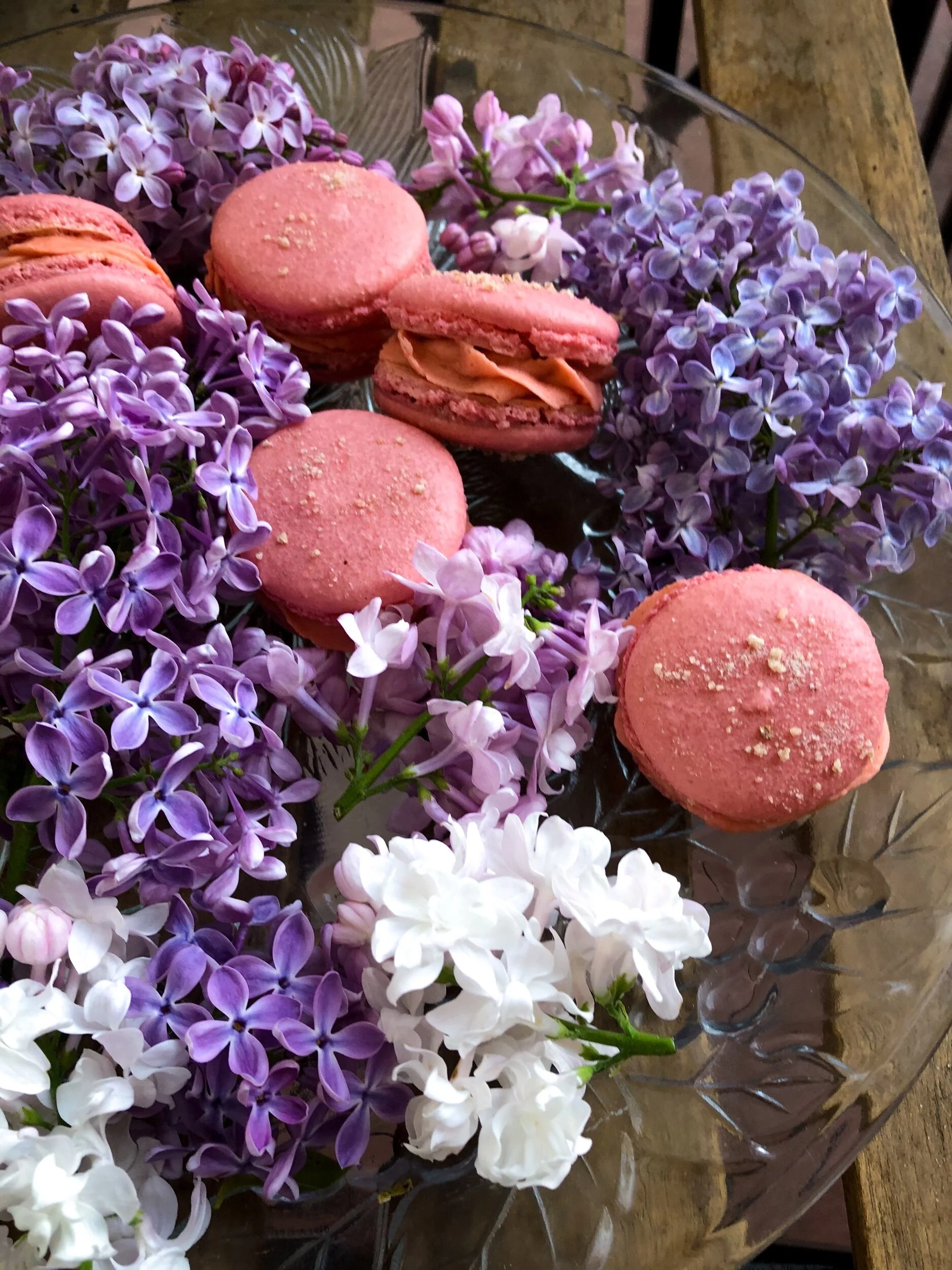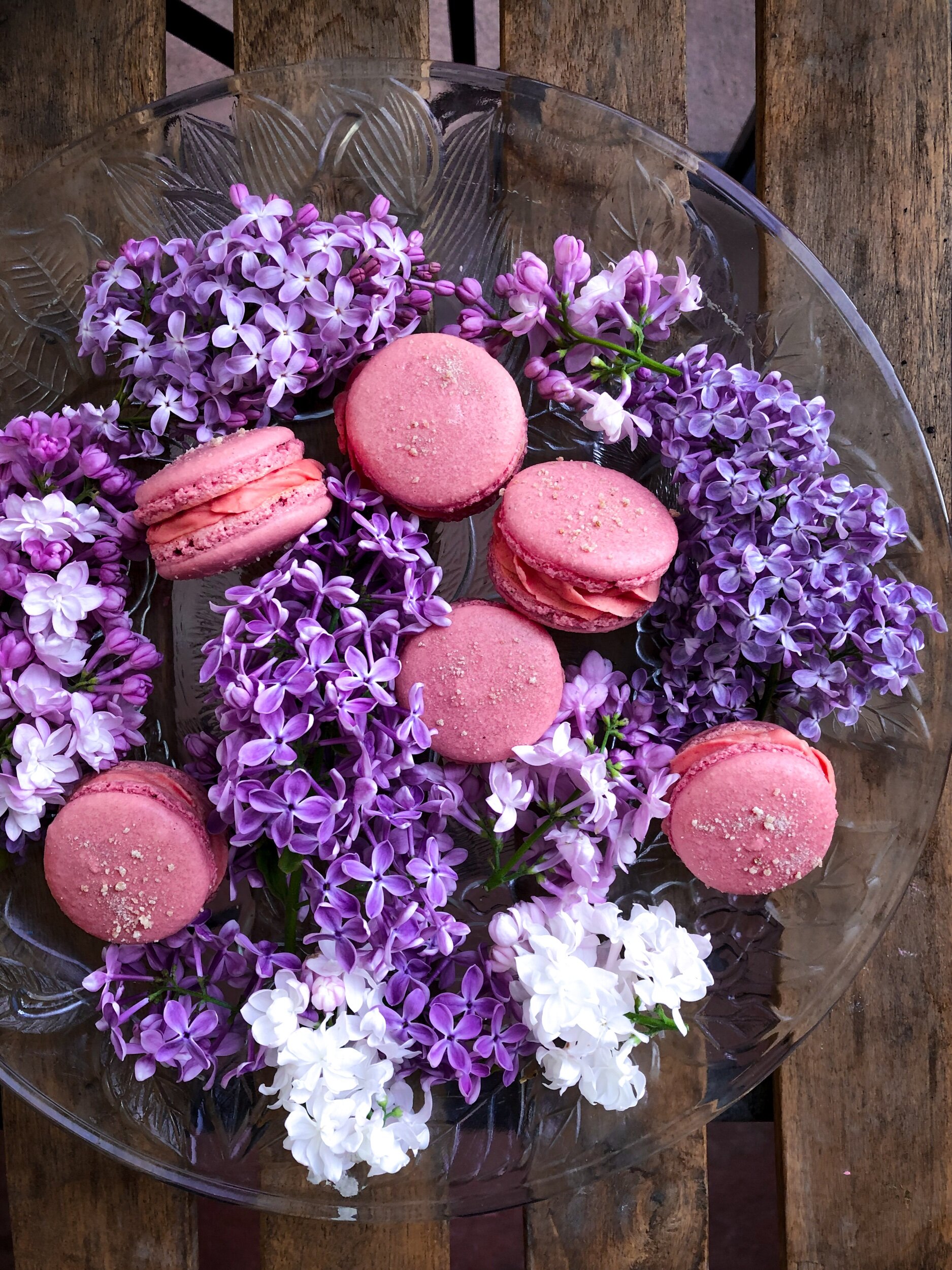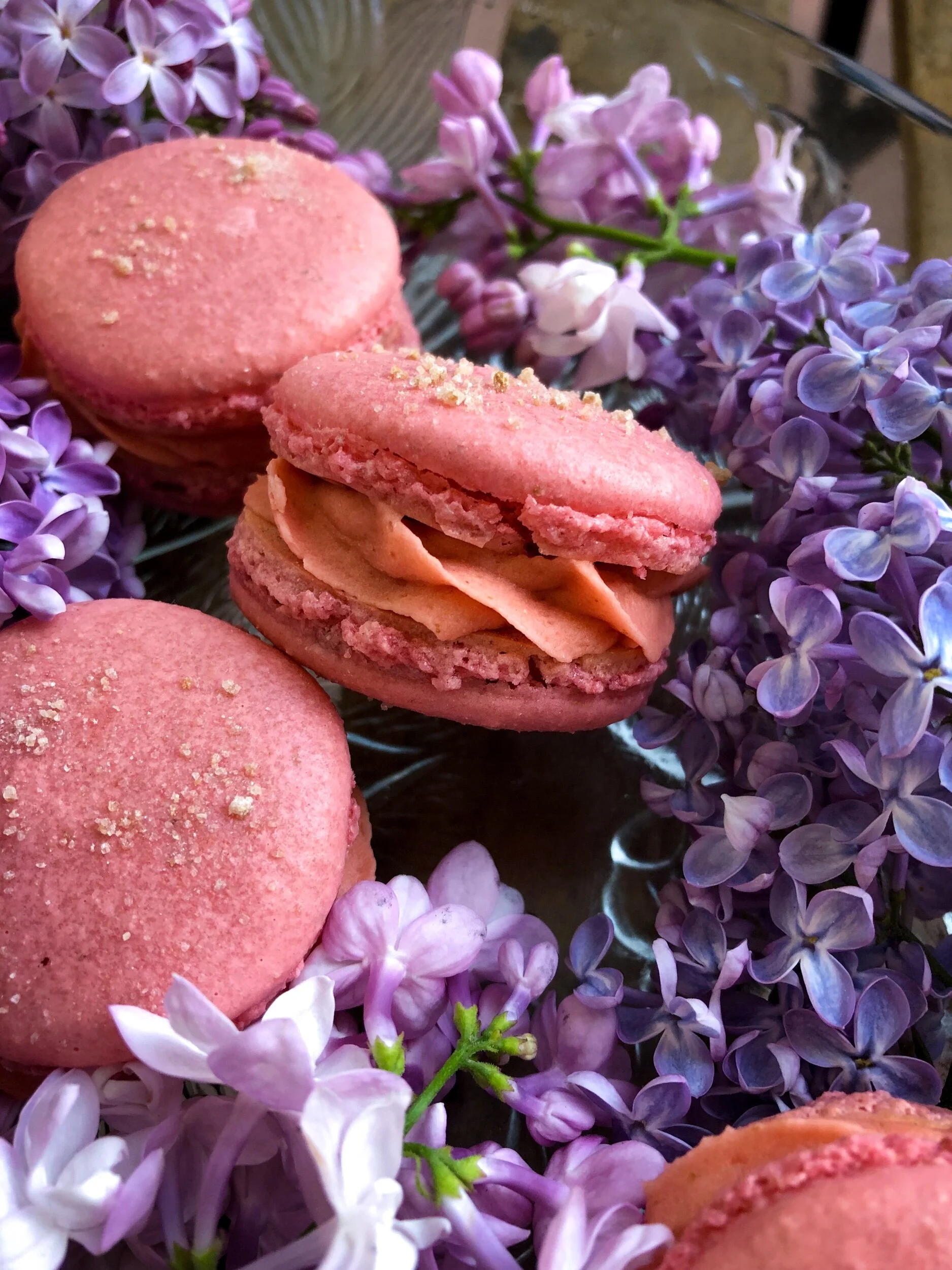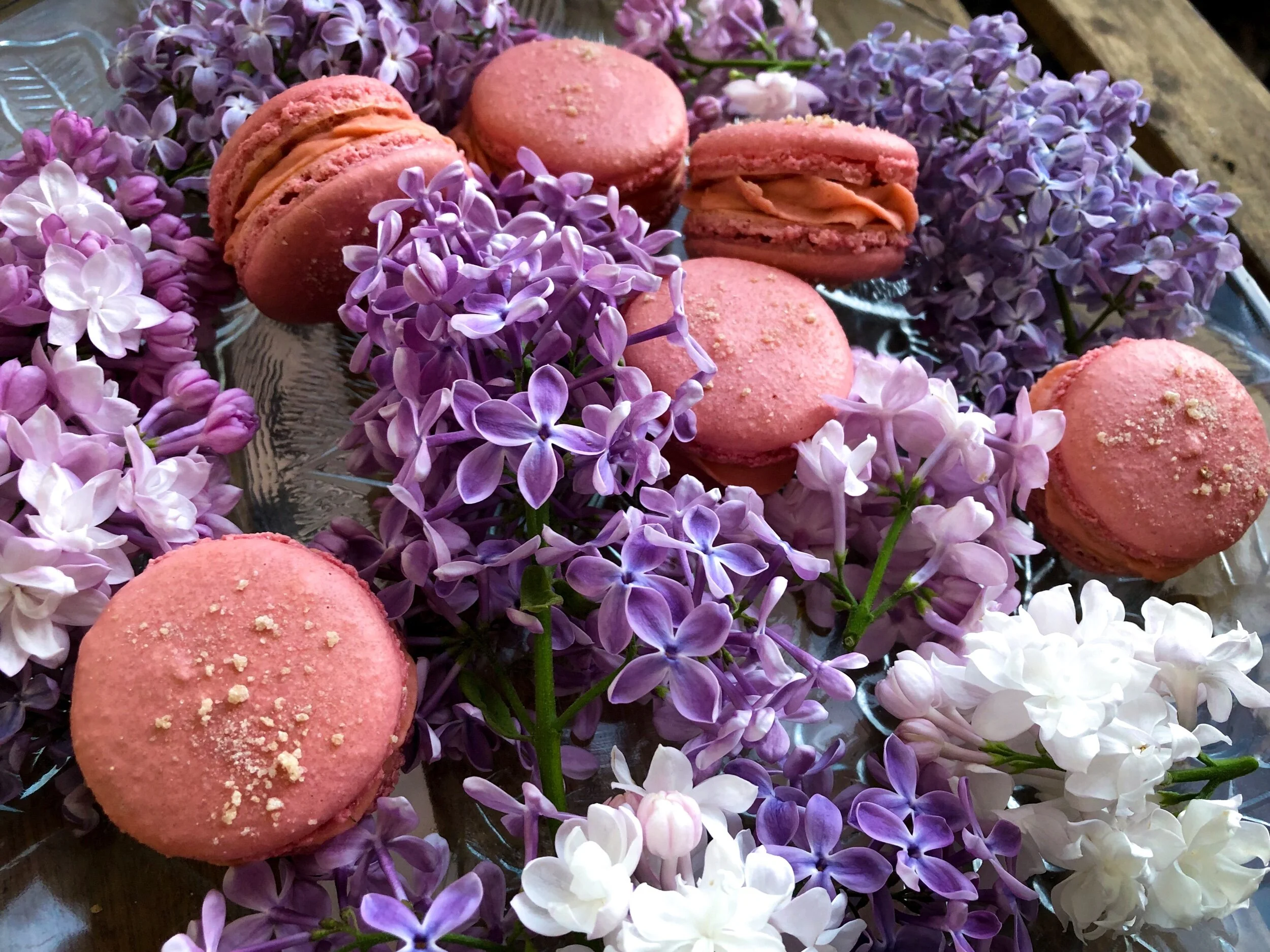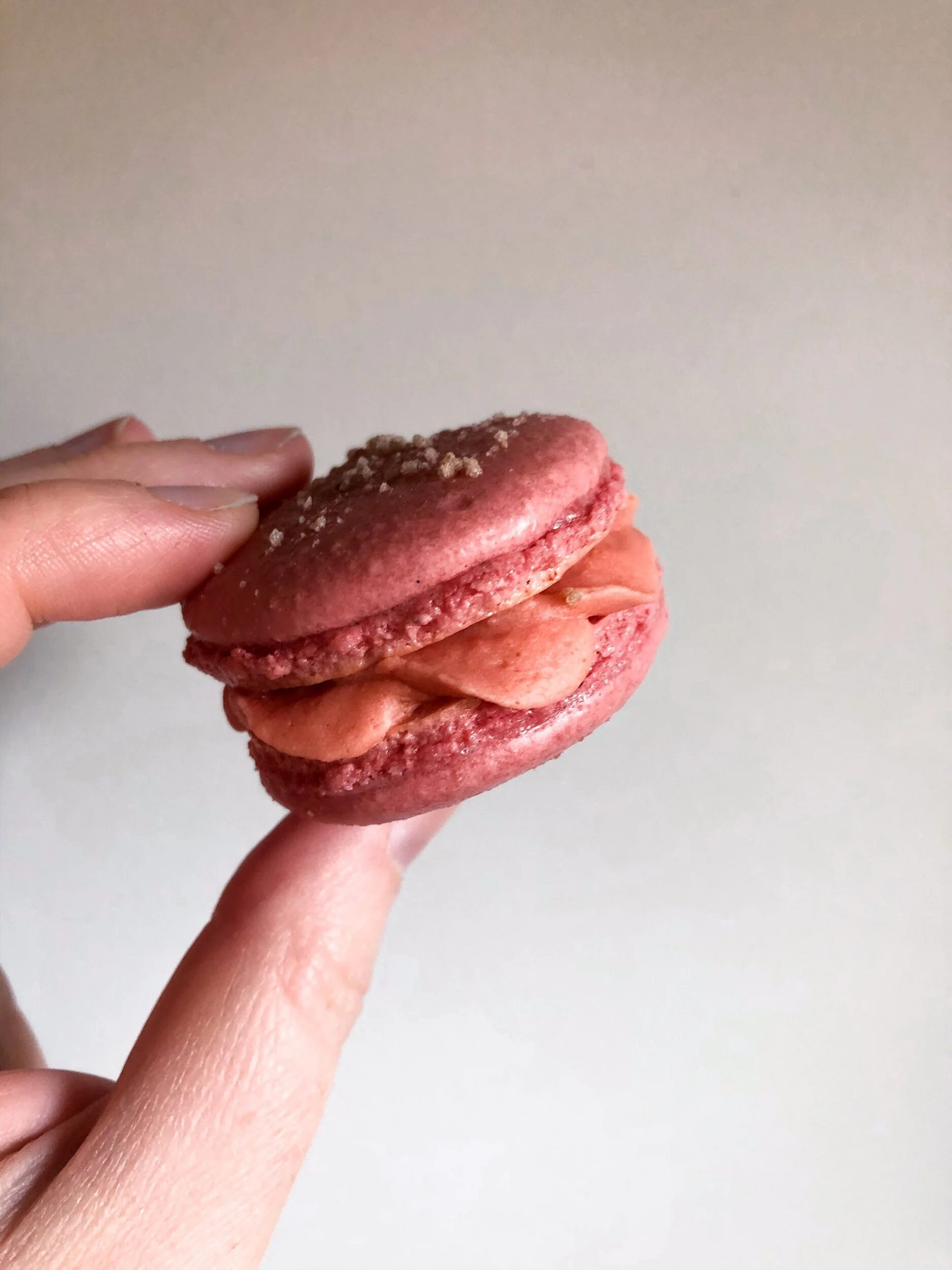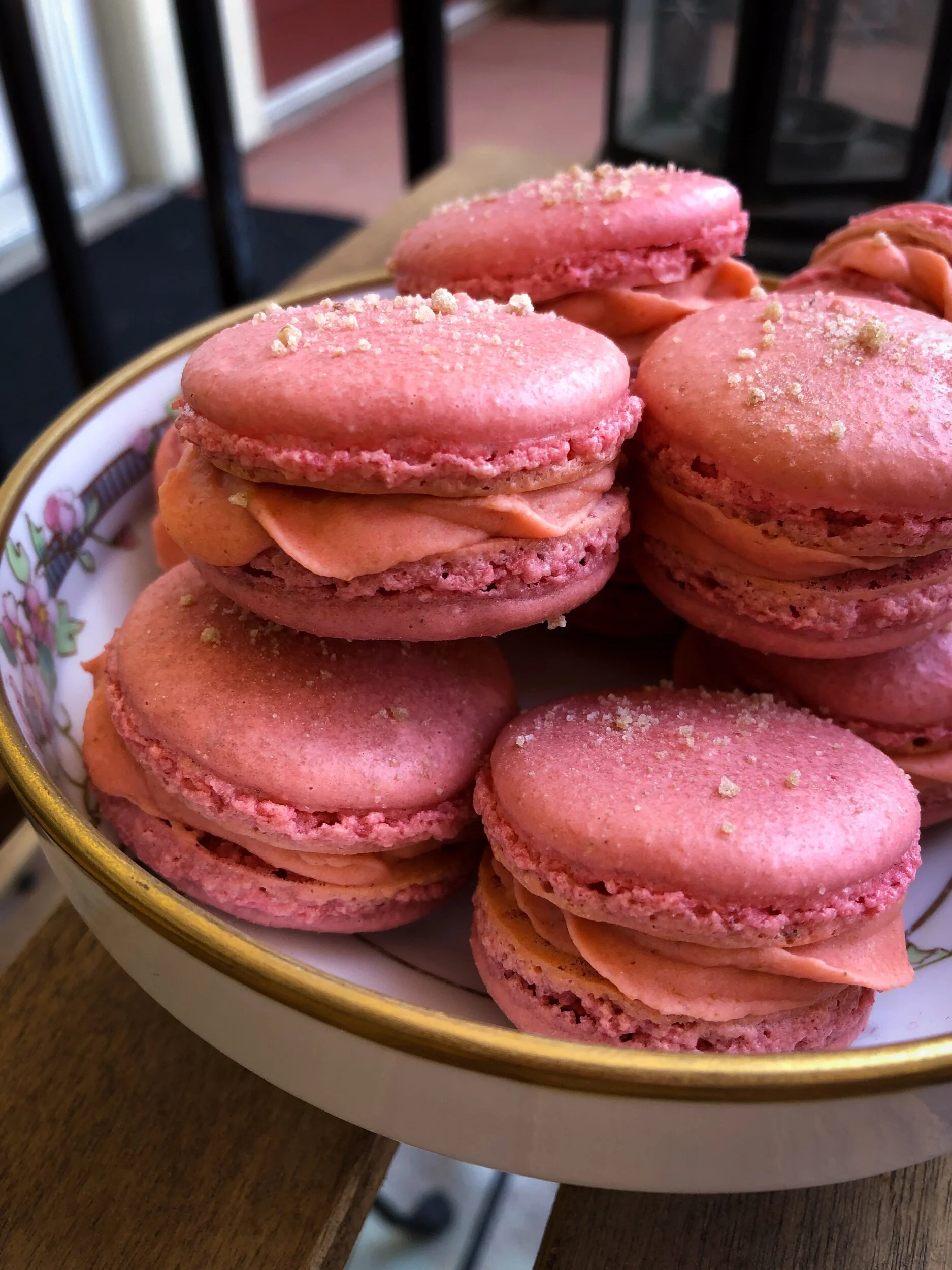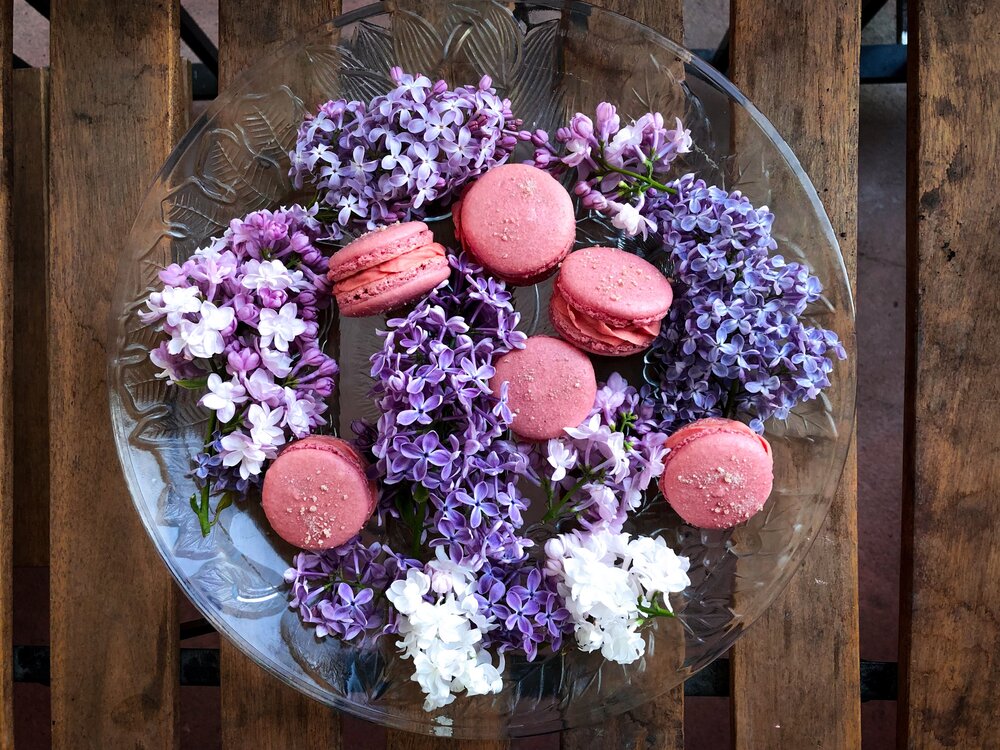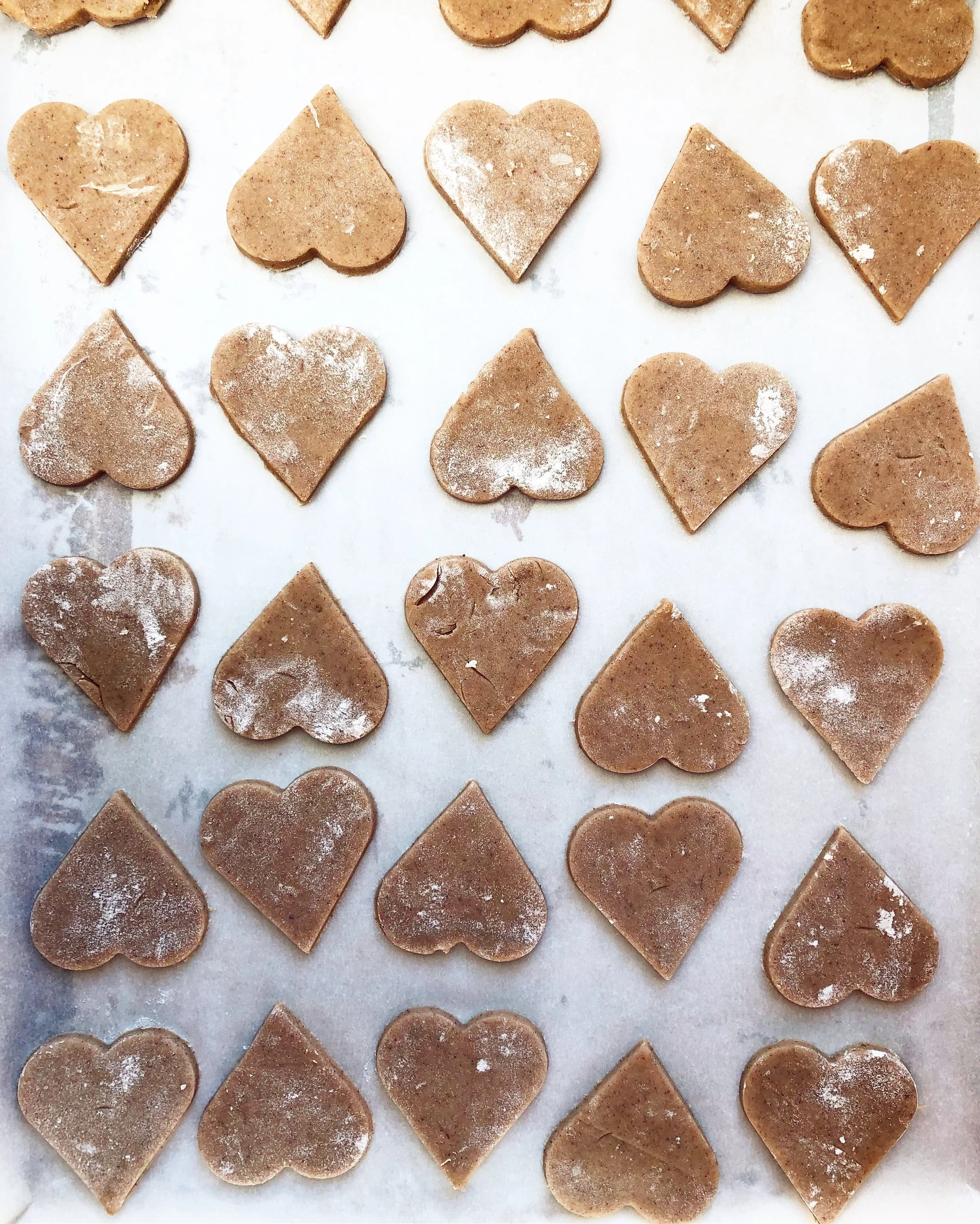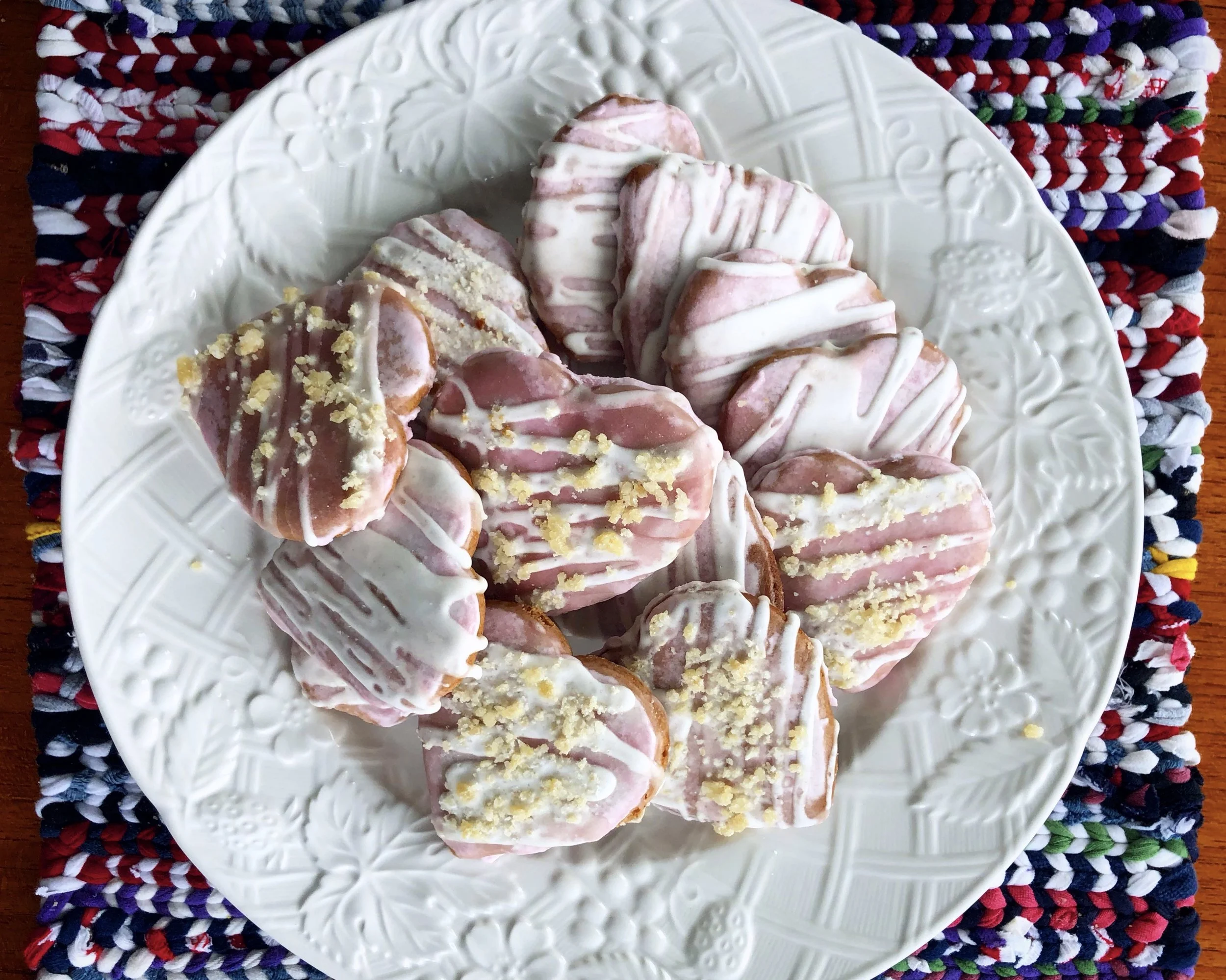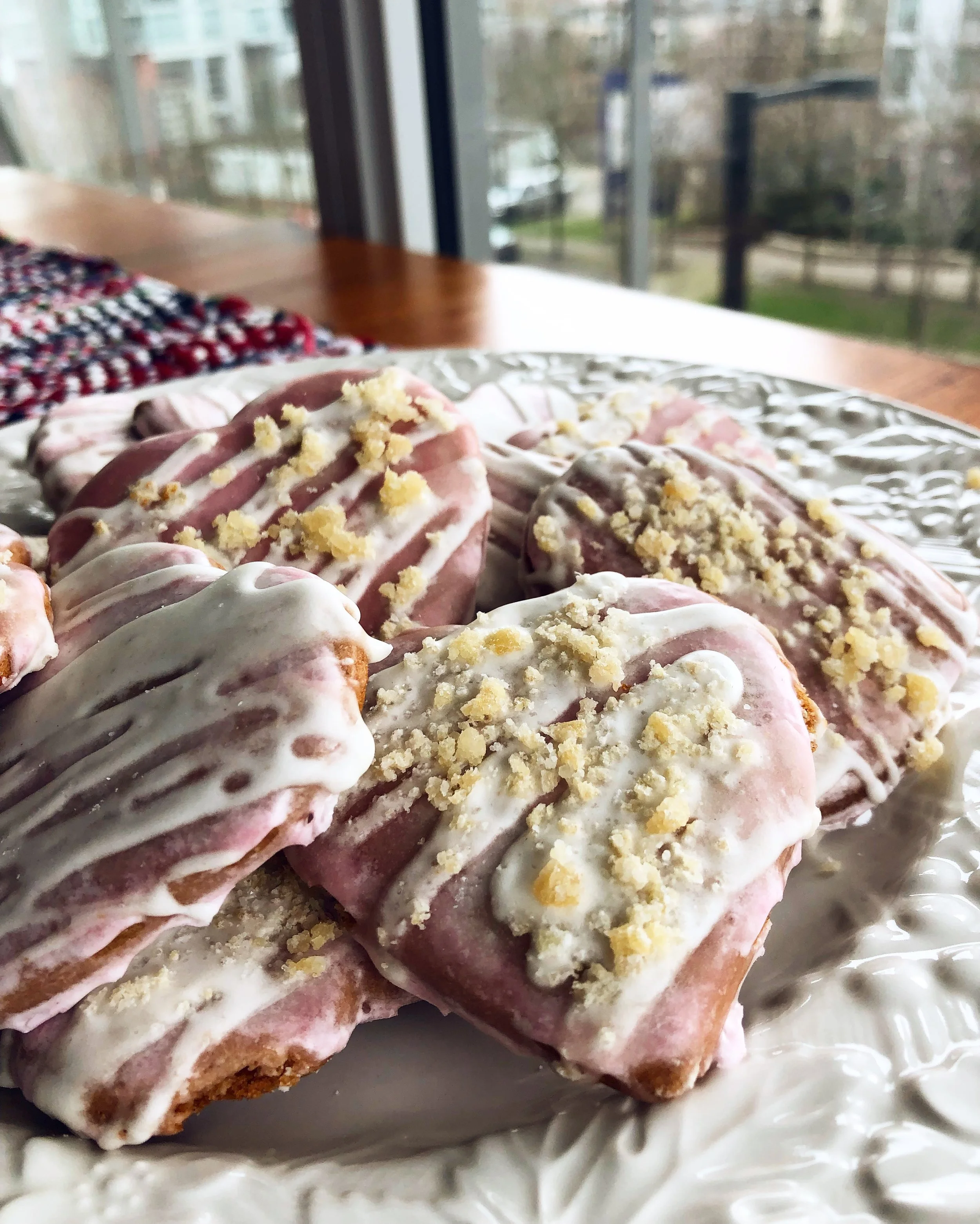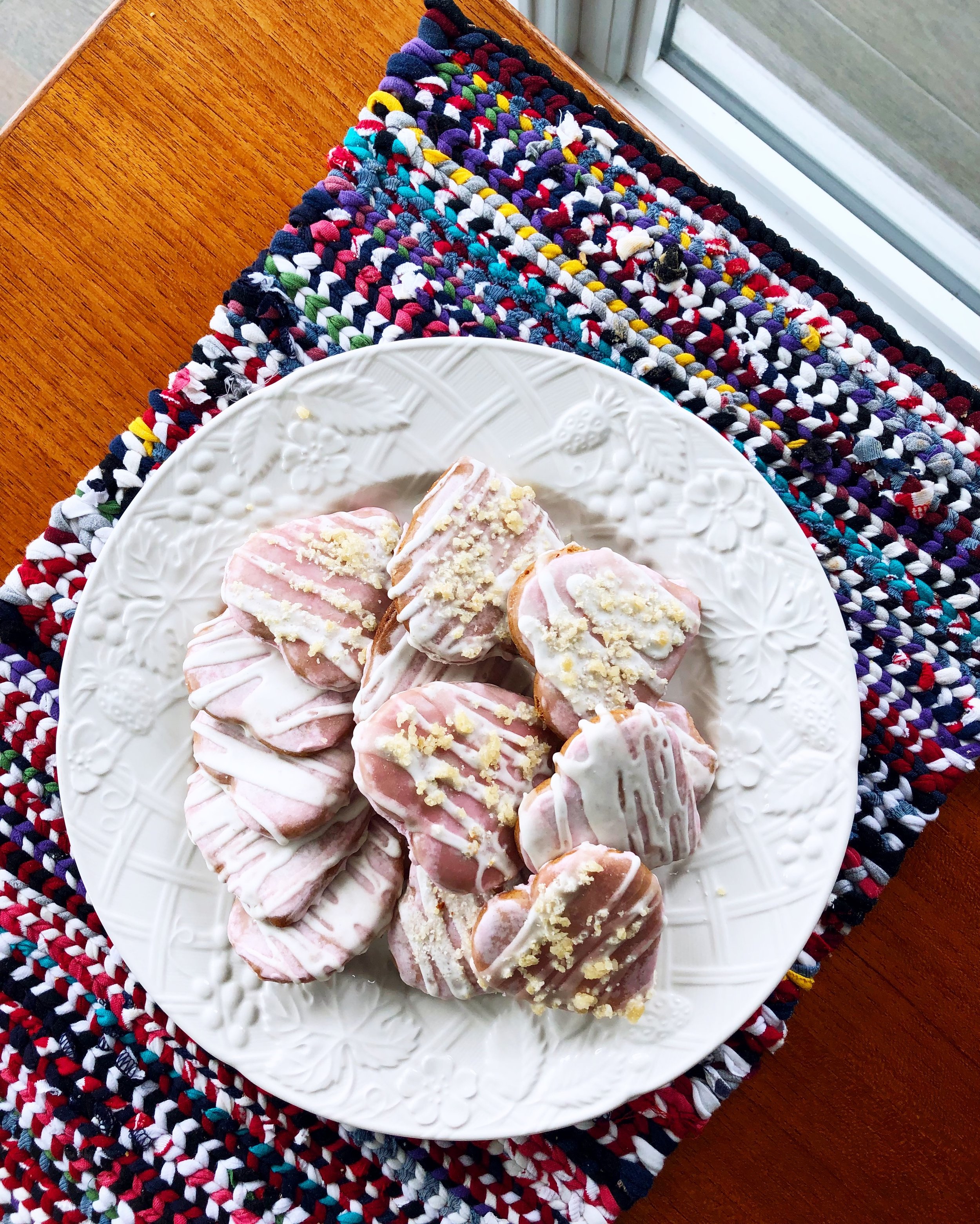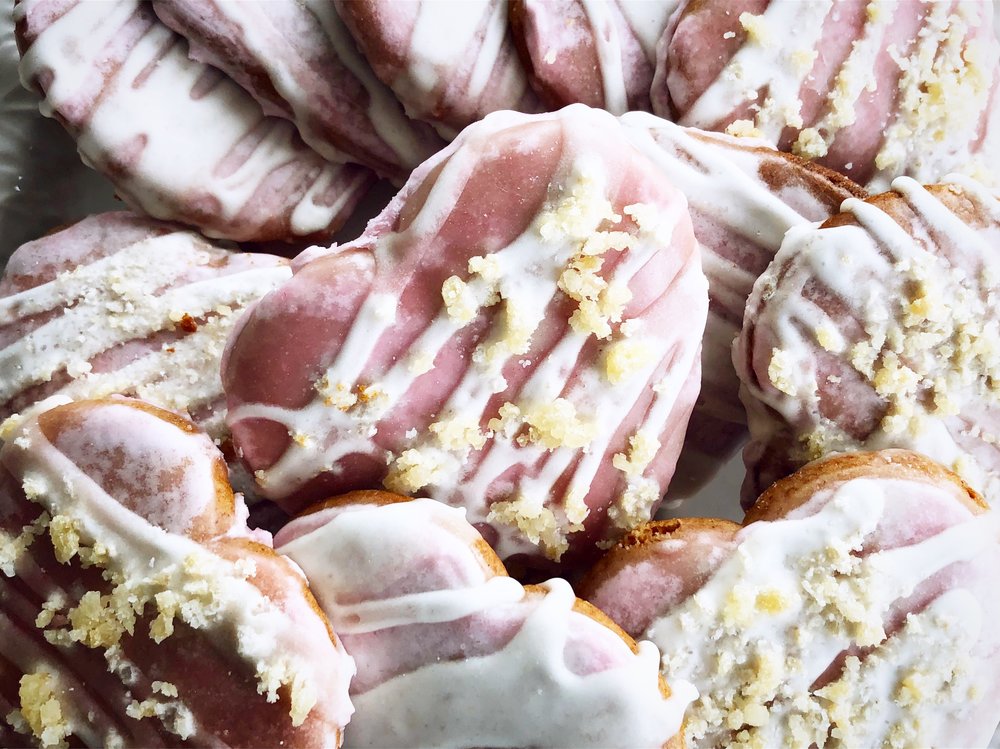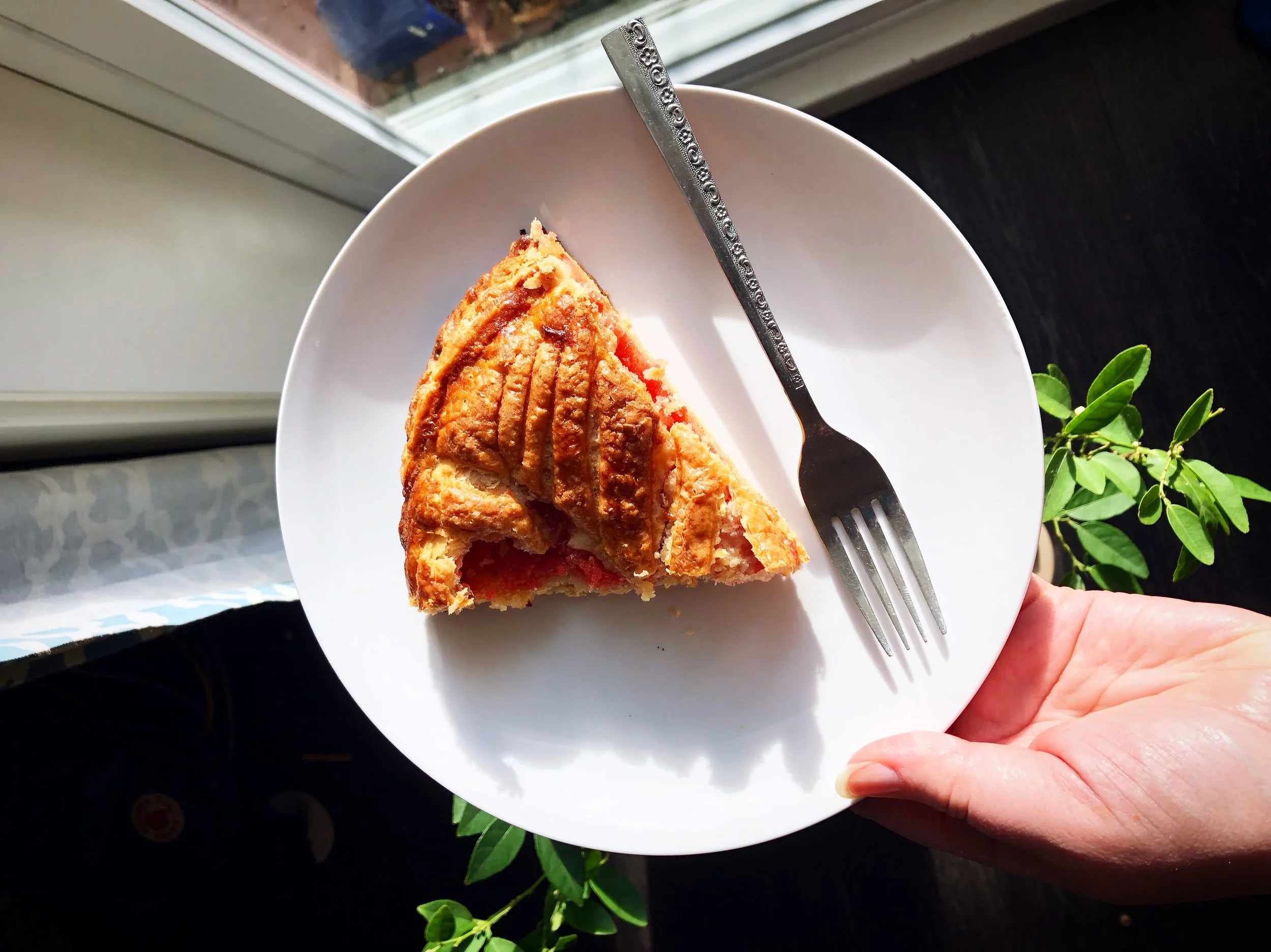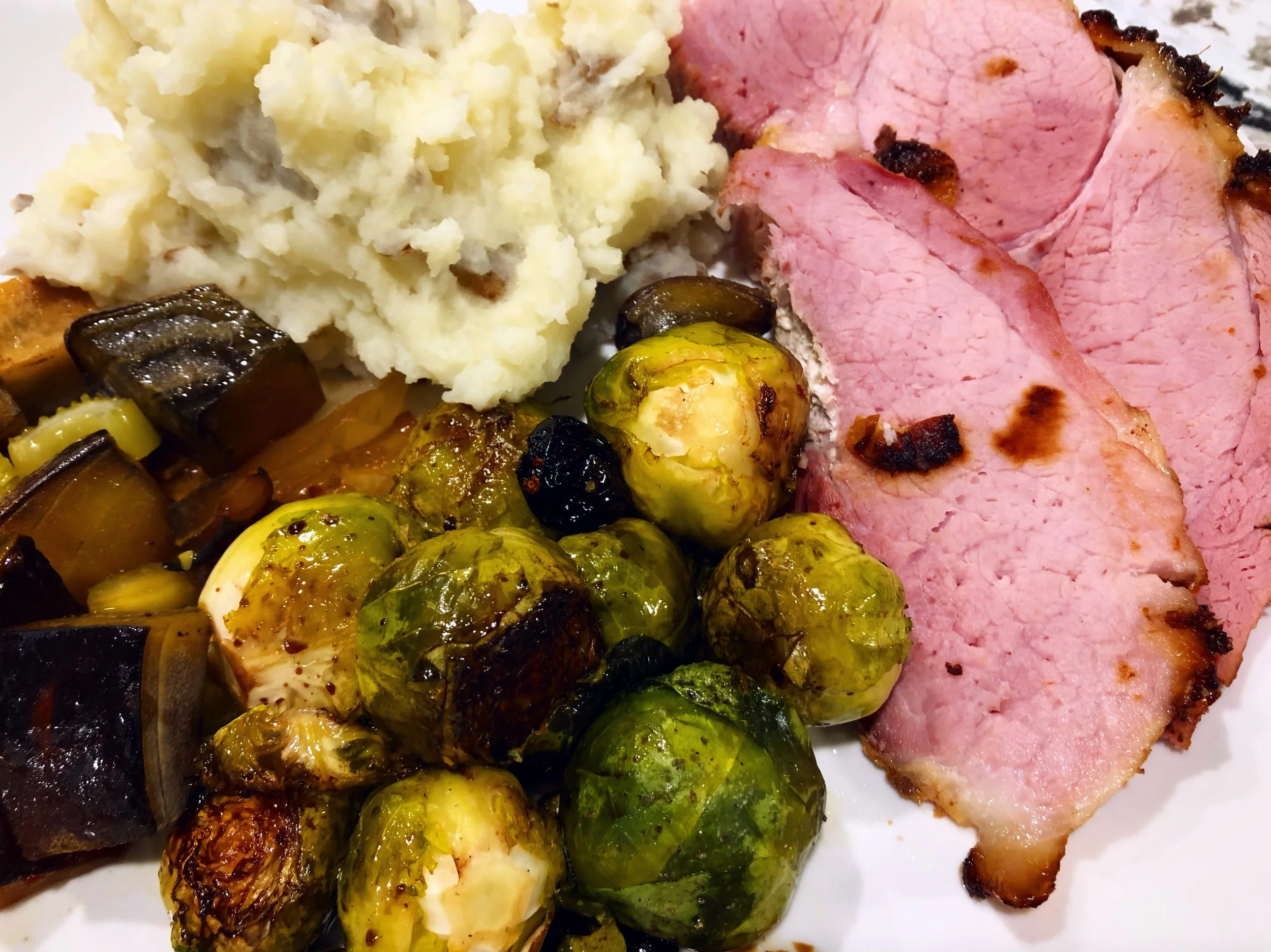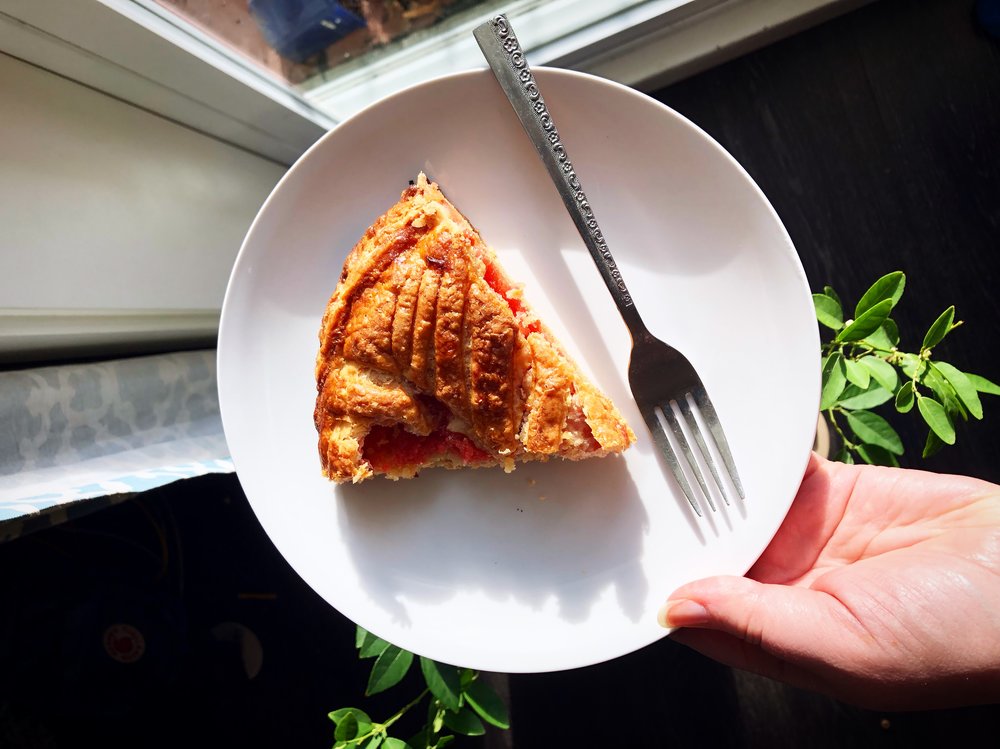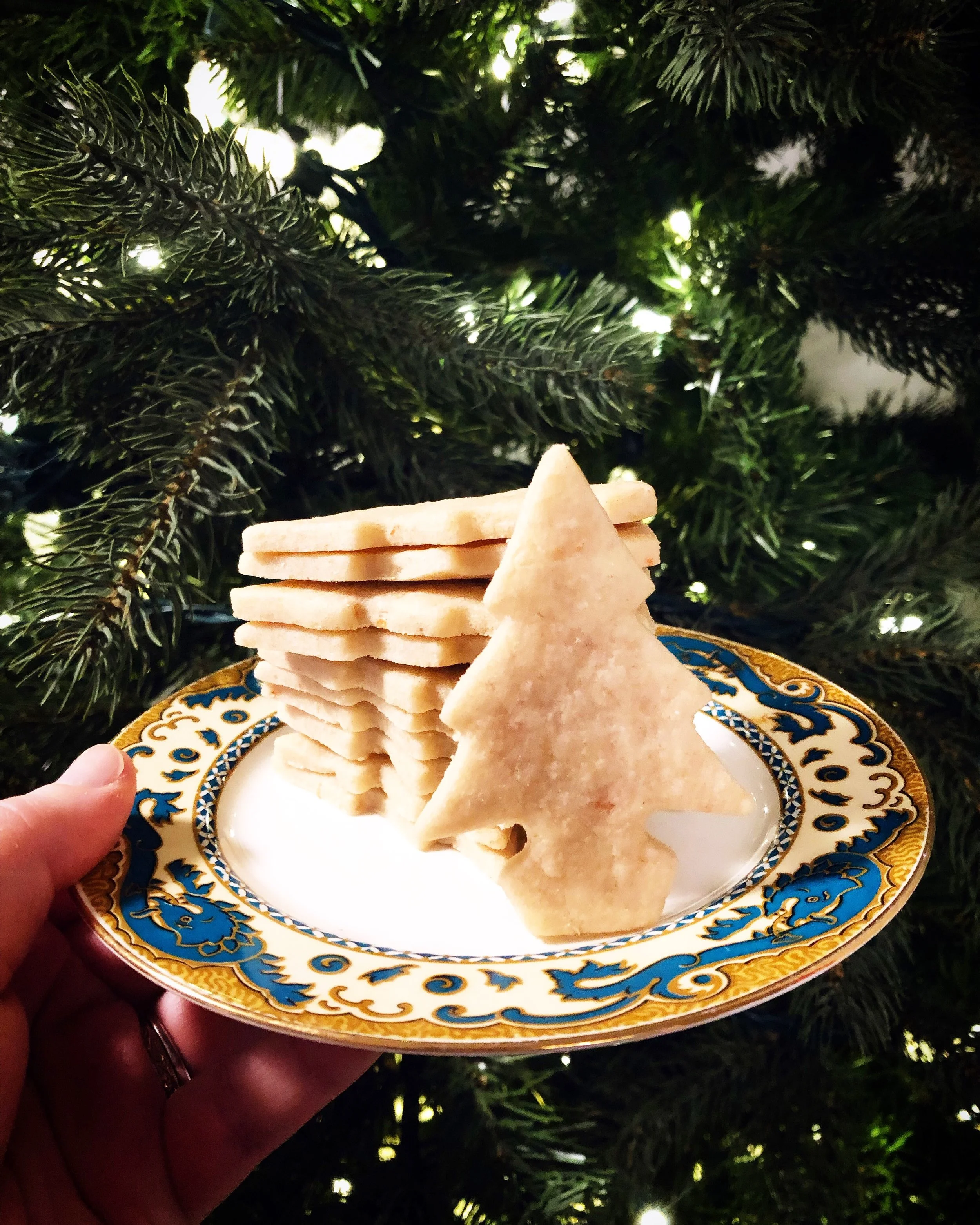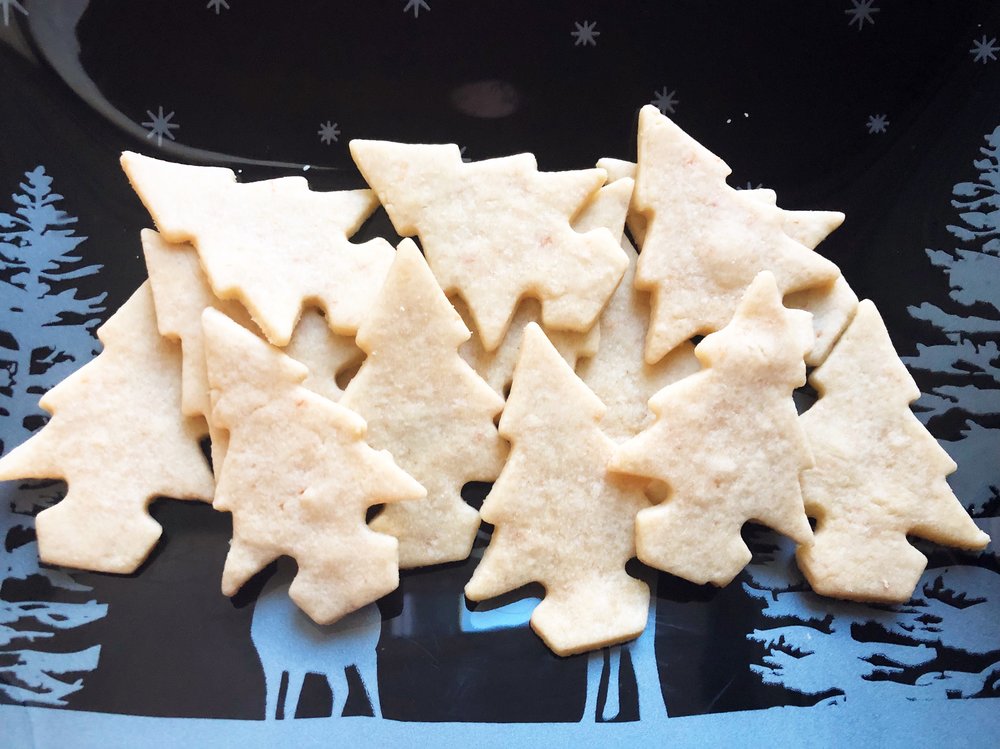Carrot Top Cake
I hope you’re not getting tired of baking recipes! I promise I’ll come up with something else soon, but in the meantime I wanted to share this cake I made to celebrate my 10 year wedding anniversary with Mr. Forager. I started with a carrot cake recipe that’s been in our family for quite a while and tweaked it so it would work with carrot tops instead. I’m always interested in recipes that help use up the parts of our food that would ordinarily be composted. Carrot tops are actually really delicious. I’ve used them as a pesto ingredient, or thrown them in when I’m making soup stock before, but this would be my first time using them in baking. I’ve seen oil cake recipes using nettles and even lettuce, so I figured this would probably work and I am happy to say it really did!
This recipe is similar to most other veggie cakes, but you’ll need a food processor or high powered blender to get the carrot tops to a fine puree. I add the carrot tops in with the oil for the recipe and puree that all together and then you don’t need to add any other liquids to the mix. The batter comes together really easily, and you can either bake it into layers and add icing, or just pour it into loaf pans if that’s going to be something you enjoy more. I think it would also be delicious as a simple loaf cake with a lemon drizzle on top.
The icing I used for the cake in these photos is an italian meringue buttercream flavoured with lemon. It’s delicious, but a little bit on the complicated side. I made it for a cake we were decorating at work and got to take some of the extra home. I think if I was doing this for an everyday sort of snack cake I would do something more simple, but for a special occasion I think this is a fantastic icing. I’m not going to be posting the recipe for it here because there are many others already online, and the recipe I used wasn’t my own.
I’m also including a recipe for a simple syrup to brush on the cake layers to keep them moist, but if you’re not wanting to bake the cake in layers you could easily use those flavours and some icing sugar to convert it into a drizzle to dress up a layer cake. I might try that next time!
As for the carrot tops, there isn’t really too much you need to worry about. Choose two bunches of carrots that look healthy and well hydrated. The best option is to support someone at your local farmers’ market, but there are also many grocery stores that sell carrots with their tops still attached. Carrot tops are sort of an unsung hero in the kitchen, and many people ask the farmers to take the tops off for them when they are buying their carrot bunches so you could probably even score some extra bunches for free! Last time I was buying carrots I was given an extra big handful of carrot tops when I told the farmer I actually wanted to keep mine.
The other flavours in this cake are lemon, thyme, and cardamom. You can use fresh thyme or dried, but fresh is going to have the most punch so if you can find some it’s worth it. I recommend having a little of the dried thyme on hand for decorating since I think the little leaves looked beautiful sprinkled on top of the cake. I also put a few blueberries on the top because I couldn’t think of anything else we had on hand to make a good focal point, and it was actually a really great flavour to add. I’d consider even doing a layer of blueberry jam in the middle of the cake next time to add more of that in.
Carrot Top Cake
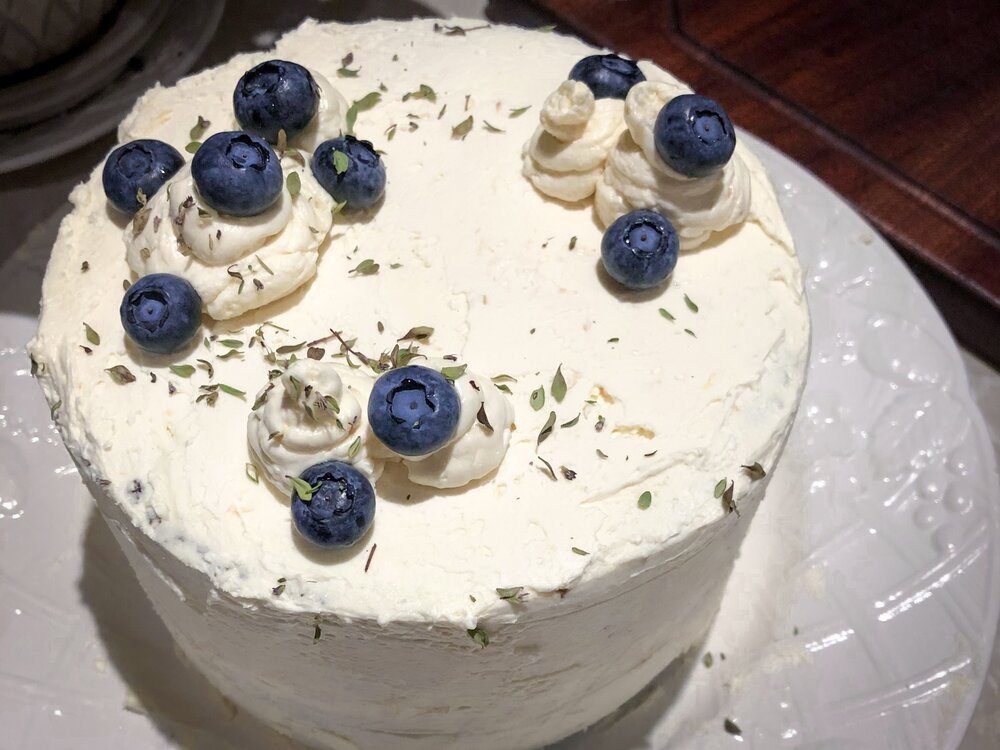
Makes four six inch round cakes
Ingredients
- 2 cups flour
- 2 tsp baking powder
- 2 tsp baking soda
- 1 tsp salt
- 1 tsp cardamom
- 2 tbsp dried thyme, or one handful fresh thyme sprigs
- 2 cups sugar
- 1 tsp vanilla extract
- 1 1/4 cups oil
- 4 eggs
- juice and zest of one lemon
- carrot tops from two average sized bunches of carrots
- 1/4 cup sugar (if making simple syrup)
- 1 cup boiling water (if making simple syrup - if making drizzle reduce to two tablespoons)
- reserved thyme sprigs, or one tbsp dried thyme
- juice and zest of one lemon
- enough icing sugar to bring liquid to desired drizzle consistency
For the Cake:
For the Simple Syrup or Drizzle
Instructions
- Sift together the flour, baking powder, baking soda, salt, and cardamom. If you are using dried thyme you can add it to these dry ingredients as well.
- Blend the carrot tops, fresh thyme (but reserve the stems for later), oil, and lemon juice until mixture is a very fine purée.
- Whisk together eggs, sugar, and vanilla extract until everything has turned to one homogenous texture. At this point add the pureed carrot tops and oil, and mix well.
- Slowly mix in the sifted dry ingredients, and mix just until there are no large lumps. There will likely still be a few small ones, but that’s ok. I like to do this part with my hands so I can feel what’s going on with the mixture, but you don’t have to if that’s not your thing.
- When baked pour into your desired shape of cake pan. This mix made four six inch round cakes for me, but you can pour it into two loaf pans, or one large rectangle. Just make sure you’re leaving room in your chosen baking pan for the cake to rise.
- Bake at 350 degrees Fahrenheit until a cake tester inserted comes out clean. For my six inch rounds this was about 25-30 minutes. It is a good idea to rotate the cakes in the oven at just over the halfway point so everything bakes evenly.
- Boil one cup of water, and dissolve the 1/4 cup sugar into it. Throw in the lemon juice and zest and reserved thyme stems (or dried thyme). It is a good idea to finely chop the thyme stems before throwing them in, but if you forget it’s not necessary. Allow to infuse until cool and then strain out the solids.
- Use this syrup to brush on your layers of cake before icing them to keep everything moist. Extra syrup can be used in mixed drinks, or however you would normally use a simple syrup.
- Boil water in a teakettle, and pour a few tablespoons of it over chopped thyme stems, or dried thyme. Allow this to cool and infuse for a while as your cake bakes and cools.
- Strain out the solids from the infusion, and combine this with lemon juice, zest, and enough icing sugar to make a drizzle in a consistency that you like. Pour over cooled cakes, allow to dry before slicing, and enjoy!
To make the Cake:
If you are icing a layer cake and want to make simple syrup:
If you want to make a drizzle to ice your cake:
